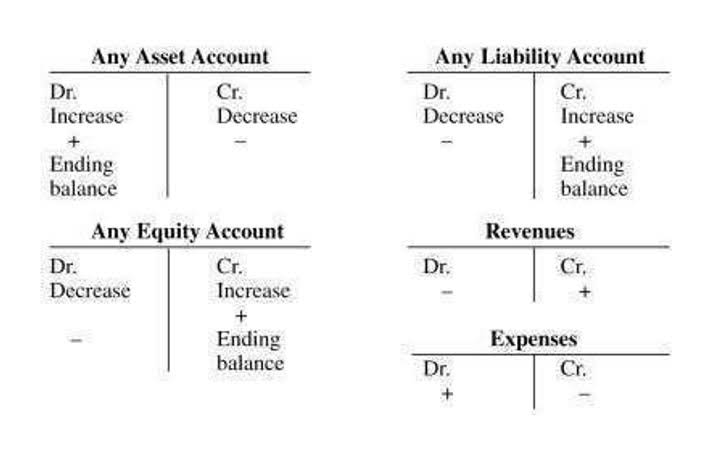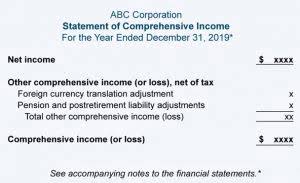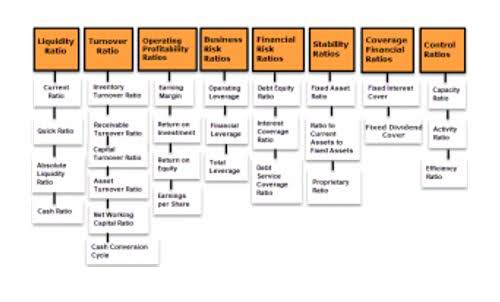Allocate the amount on line 5 that is an accumulation distribution to the earliest applicable year first, but don’t allocate more than the amount on line 12 for any throwback year. An accumulation distribution is thrown back first to the earliest preceding tax year in which there is undistributed net income (UNI). Then, it is thrown back beginning with the next earliest year to any remaining preceding tax years of the trust. The portion of the accumulation distribution allocated to the earliest preceding tax year is the amount of the UNI for that year.
Are Funeral Expenses Deductible on Form 1041?
See section 642(h) and related regulations for more information. If the return is for a fiscal year or a short tax year, fill in the tax year space at the top of each Schedule K-1. On each Schedule K-1, enter the information about the estate or trust and the beneficiary in Parts I and II (items A through H). In Part III, enter the beneficiary’s share of each item of income, deduction, credit, and any other information the beneficiary needs to file their income tax return. Any estate or trust that pays or sets aside any part of its income for a charitable purpose must reduce the deduction by the portion allocable to any tax-exempt income. If the governing instrument specifically provides as to the source from which amounts are paid, permanently set aside, or to be used for charitable purposes, the specific provisions control.
See Final Regulations – TD9918 for examples of allowable excess deductions on termination of an estate or trust. If the estate or trust received tax-exempt income, figure the allocation of expenses between tax-exempt and taxable income on a separate sheet and attach it to the return. For more information, see Allocation of Deductions for Tax-Exempt Income, earlier. The NIIT is imposed on estates and trusts to the extent they have undistributed NII.
Once you have completed Form 1041, you will need to submit it to the IRS. The deadline for filing Form 1041 is April 15th of the year following the tax year. If you need more time to file, you can request an extension using Form 7004. With Taxfyle, your firm can access licensed CPAs and EAs who can prepare and review tax returns for your clients. At Taxfyle, we connect individuals and small businesses with licensed, experienced CPAs or EAs in the US. We handle the hard part of finding the right tax professional by matching you with a Pro who has the right experience to meet your unique needs and will handle filing taxes for you.
This allows business owners to make faster, data-driven decisions, reduce errors, enhance tax compliance, and stay audit-ready. By leveraging cloud-based accounting tools and AI-driven automation, businesses can optimize financial strategy, scalability, and overall efficiency, making real-time bookkeeping an essential tool for growth and long-term success. Modern bookkeeping services go beyond basic record-keeping, offering CFO-level insights that help businesses improve cash flow, optimize expenses, and make data-driven financial decisions. Strategic bookkeepers provide real-time financial intelligence, track key performance indicators (KPIs), and ensure businesses remain audit-ready and investor-friendly.
- The fiduciary of an estate or trust may elect to treat as paid during the tax year any amount of gross income received during that tax year or any prior tax year that was paid in the next tax year for a charitable purpose.
- Form 1041 is a tax return filed by estates and trusts to report their income, deductions, and taxes owed to the Internal Revenue Service (IRS).
- What are the penalties for late filing or inaccuracies on the 1041 form?
- You don’t need IRS approval to use a substitute Schedule K-1 if it is an exact copy of the IRS schedule.
You can use certain PDSs designated by the IRS to meet the “timely mailing as timely filing/paying” rule for tax returns and payments. Go to IRS.gov/PDS for the current list of designated services. Section 645 provides that if both the executor (if any) of an estate (the related estate) and the trustee of a qualified revocable trust (QRT) elect the treatment in section 645, the trust must be treated and taxed as part of the related estate during the election period. This federal form 1041 election may be made by a QRT even if no executor is appointed for the related estate. Abusive trust arrangements often use trusts to hide the true ownership of assets and income or to disguise the substance of transactions. These arrangements frequently involve more than one trust, each holding different assets of the taxpayer (for example, the taxpayer’s business, business equipment, home, automobile, etc.).
Line 16—Credit for Tax Paid on Undistributed Capital Gains
For a trust treated as owned by two or more grantors or other persons, the trustee must give all payers of income during the tax year the name, address, and TIN of the trust. The trustee must report each type of income in the aggregate and each item of gross proceeds separately. The due date for any Forms 1099 required to be filed with the IRS by a trustee under this method is February 28, 2025 (March 31, 2025, if filed electronically). For a trust treated as owned by one grantor or by one other person, the trustee must give all payers of income during the tax year the name, address, and TIN of the trust. The trustee must also file with the IRS the appropriate Forms 1099 to report the income or gross proceeds paid to the trust during the tax year that show the trust as the payer and the grantor, or other person treated as owner, as the payee. Source Income of Foreign Persons; and Form 1042-S, Foreign Person’s U.S. Source Income Subject to Withholding.
The decedent’s estate is an entity that is formed at the time of an individual’s death and is generally charged with gathering the decedent’s assets, paying the decedent’s debts and expenses, and distributing the remaining assets. Generally, the estate consists of all the property, real or personal, tangible or intangible, wherever situated, that the decedent owned an interest in at death. The easiest way to limit your Form 1041 income tax exposure is to utilize a trust and have it regularly updated by an experienced estate planning attorney. Updates will need to occur whenever the tax code fundamentally changes.
Sign the form electronically using a Personal Identification Number (PIN) provided by the IRS. Submit the form through the software, which will generate a confirmation receipt upon acceptance. The IRS mandates encryption of all electronic submissions to protect sensitive information. Additionally, the preparer must be registered with the IRS and have a valid Preparer Tax Identification Number (PTIN).
However, if this property is exempted from the bankruptcy estate or is abandoned by the trustee or debtor-in-possession, the income from the property isn’t included in the bankruptcy estate’s gross income. Also included in income is gain from the sale of the bankruptcy estate’s property. To figure gain, the trustee or debtor-in-possession must determine the correct basis of the property. If the election terminates as the result of a later appointed executor, the executor of the related estate must file Forms 1041 under the name and TIN of the related estate for all tax years of the related estate beginning with the decedent’s death. The electing trust’s election period and tax year terminate the day before the appointment of the executor.
- Always refer to the IRS website or a tax professional for the most accurate and up-to-date information.
- These may include credits for foreign taxes paid on income that is reported on Form 1041 or deductions for distributions to beneficiaries.
- For an example of the computation, see Regulations section 1.691(c)-1 and Pub.
- In general, Form 8855, Election To Treat a Qualified Revocable Trust as Part of an Estate, must be filed by the due date for Form 1041 for the first tax year of the related estate.
Common Mistakes To Avoid When Filing Form 1041
Enter the amount of any estimated tax payment you made with Form 1041-ES for 2024 plus the amount of any overpayment from the 2023 return that was applied to the 2024 estimated tax. Additional tax on the early disposition of noncash property for which a section 247(g)(3) election was made by an Alaska Native Settlement Trust. Interest on deferred tax attributable to installment sales of certain timeshares and residential lots and certain nondealer real property installment obligations. See the Instructions for Form 8960 to calculate the tax, and Net Investment Income Tax (NIIT), later, for more information. If the amount from line 14 of Form 8978 is a negative amount, treat it as a positive amount and add it to the total reported on line 2e. On the dotted line next to line 2e, enter “From Form 8978” and the amount.
Failure To Provide Information Timely
For estates and trusts, identifying and claiming all permissible deductions is key to reducing the overall tax liability. These deductions can range from administration expenses, which include legal and accounting fees, to charitable contributions made by the estate or trust. It is essential for the fiduciary to keep thorough records of these expenses to substantiate the deductions claimed on Form 1041.
When you use Taxfyle, you’re guaranteed an affordable, licensed Professional. Taxfyle connects you to a licensed CPA or EA who can take time-consuming bookkeeping work off your hands. Taxes are incredibly complex, so we may not have been able to answer your question in the article. Get $30 off a tax consultation with a licensed CPA or EA, and we’ll be sure to provide you with a robust, bespoke answer to whatever tax problems you may have. Set your business up for success with our free small business tax calculator.
Qualified fiduciaries are able to file Form 1041 and related schedules over the internet, but only after they have been granted e-file provider status—a process that can take four to six weeks to complete. However, QBI and qualified PTP items don’t include any of the following. Enter the beneficiary’s share, if any, of foreign trading gross receipts.
Form 1041: U.S. Income Tax Return for Estates and Trusts
Therefore, miscellaneous itemized deductions are not deductible as excess deductions on termination of an estate or trust. Consult your state taxing authority for information about deducting miscellaneous itemized deductions on your state tax return. Finally, any excess deductions that are directly attributable to a class of income may be allocated to another class of income.
If you are the trustee of a foreign trust, file Form 1040-NR instead of Form 1041. Also, a foreign trust with a U.S. owner must generally file Form 3520-A, Annual Information Return of Foreign Trust With a U.S. A revocable living trust is an arrangement created by a written agreement or declaration during the life of an individual and can be changed or ended at any time during the individual’s life. A revocable living trust is generally created to manage and distribute property. Many people use this type of trust instead of (or in addition to) a will. Compute the AGI of an estate or a non-grantor trust by subtracting the following from total income on line 9 of page 1.


















